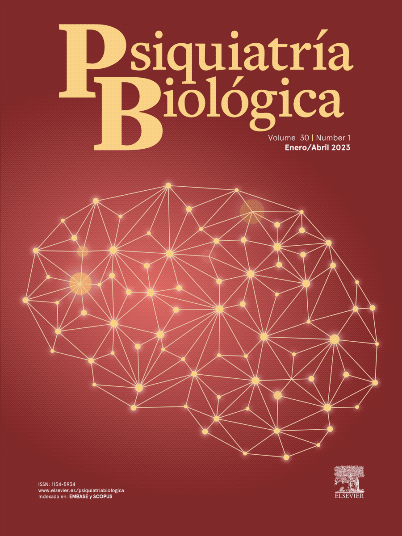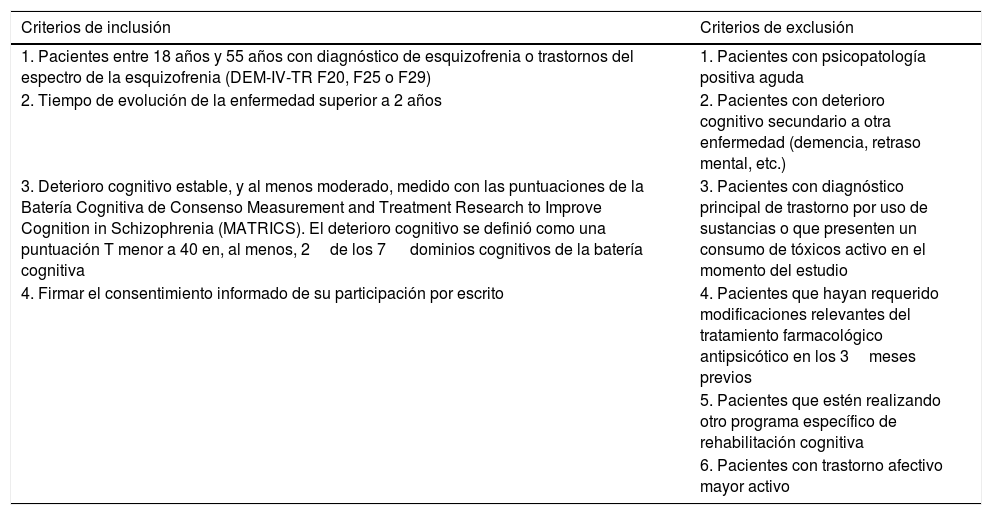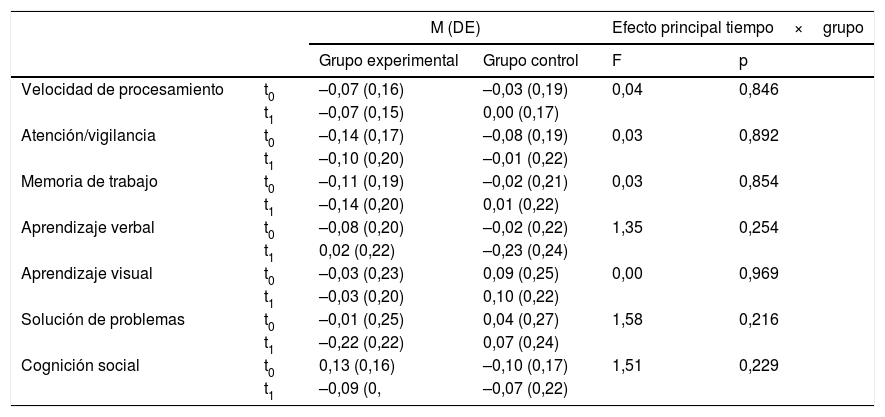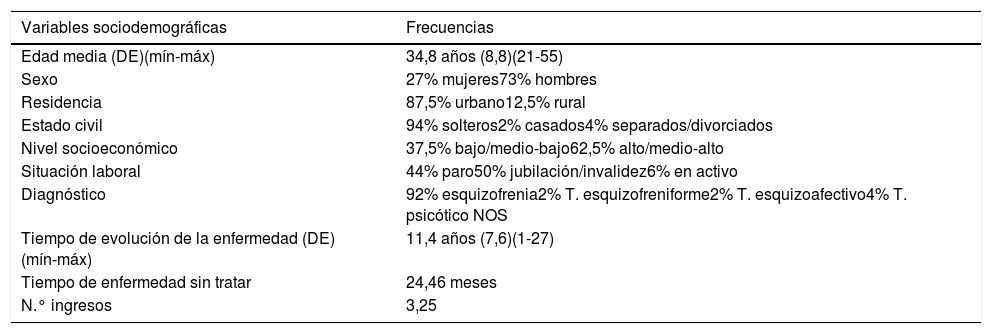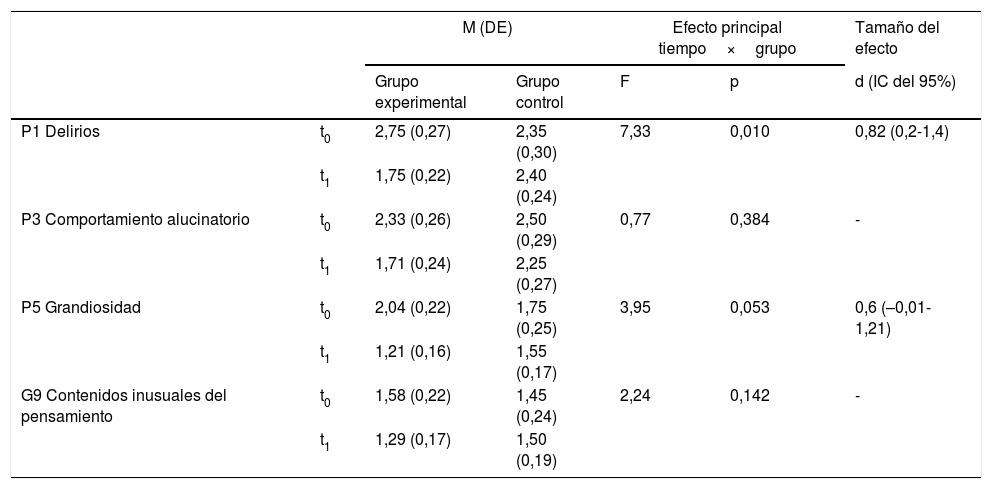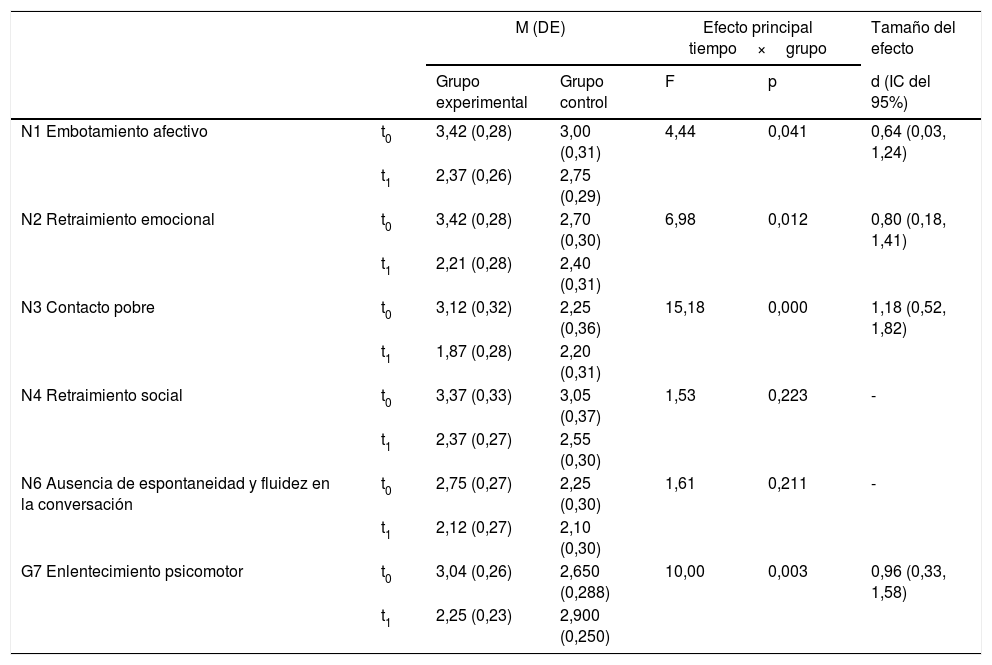La esquizofrenia es uno de los trastornos mentales que mayor discapacidad humana genera en todo el mundo. Hasta el momento, el tratamiento de síntomas negativos en esquizofrenia dista de estar resuelto de un modo satisfactorio. La singular capacidad del cine para activar la atención, la imaginación y la memoria, así como de activar procesos mentales complejos en los espectadores, permite pensar que puede ser una herramienta terapéutica eficaz para el tratamiento de determinados trastornos mentales.
ObjetivosEvaluar el eficacia de una nueva técnica psicoterapéutica (diseñada ad hoc) basada en el análisis fílmico por secuencias y el doble visionado utilizando cine de ficción en pacientes con diagnóstico de trastornos del espectro de la esquizofrenia y otros trastornos psicóticos.
MetodologíaSe realizó un ensayo clínico multicéntrico, aleatorizado y en grupos paralelos en el que participaron 48 pacientes con diagnóstico de trastornos psicóticos del espectro de la esquizofrenia. Se compararon los efectos de la aplicación de una técnica psicoterapéutica grupal, basada en el uso de cine de ficción como soporte y cuya técnica estaba inspirada en el análisis fílmico, frente a un grupo control que también trabajaba con una técnica más inespecífica sobre el mismo soporte. Para el desarrollo de la nueva técnica psicoterapéutica grupal —objeto de este estudio— se seleccionaron 3 técnicas del análisis fílmico en las que los investigadores en su práctica clínica observaron un potencial terapéutico: 1) la segmentación del material fílmico en secuencias; 2) el análisis por secuencias de los contenidos de la película, y 3) el doble visionado del material cinematográfico. La intervención constaba de 26 sesiones, que implicaban la doble visión de los 13 episodios de la primera temporada de la serie de televisión Los Soprano.
Las medidas primarias de resultado fueron los cambios obtenidos en las subescalas de la Escala de Síndromes Positivo y Negativo de la Esquizofrenia, según el modelo pentafactorial de Wallwork, entre la situación basal y final tras el tratamiento. Como medidas de resultado cognitivas se utilizaron los cambios en las escalas de cognición incluidas en la MATRICS Consensus Cognitive Battery y en escalas de cognición social (MSCEIT, FEIT, FBS) antes y después del tratamiento.
ResultadosLos resultados mostraron una mejoría estadísticamente significativa en el grupo experimental frente al grupo control en los síntomas, positivos (p=0,01; d=0,82 [IC del 95%, 0,2-1,43]), negativos (p=0,005; d=0,89 [IC del 95%, 0,26-1,51]) y desorganizados (p=0,013; d=0,49 [IC del 95%, 0,11-1,09]). En el análisis post-hoc del factor negativo se encontró mejorías estadísticamente significativas en las variables: embotamiento afectivo (p=0,041; d=0,64 [IC del 95%, 0,03-1,24]), retraimiento emocional (p=0,012; d=0,80 [IC del 95%, 0,18-1,41]), contacto pobre (p=0,000; d=1,18 [IC del 95%, 0,52-1,82]) y enlentecimiento motor (p=0,003; d=0,96 [IC del 95%, 0,33-1,58]). En el análisis post-hoc del factor positivo se encontró mejoría significativa en el subdominio delirios (p=0,01; d=0,82 [IC del 95%, 0,2-1,4]). No se encontraron diferencias significativas entre ambos grupos en síntomas afectivos ni en ninguno de los dominios cognitivos estudiados.
ConclusionesLa nueva técnica psicoterapéutica propuesta es aplicable y bien aceptada por los pacientes con esquizofrenia y otros trastornos psicóticos. El uso de esta nueva técnica psicoterapéutica inspirada en el uso del análisis fílmico puede servir para mejorar los síntomas positivos, negativos y desorganizados en pacientes con esquizofrenia.
Schizophrenia is one of the mental disorders that generate the greatest human disability in the world. The treatment of negative symptoms in schizophrenia is still far from being resolved satisfactorily. The unique ability of cinema to activate attention, imagination and memory, as well as to activate complex mental processes in viewers leads one to think that it can be an effective therapeutic tool for the treatment of certain mental disorders.
ObjectiveTo evaluate the efficacy of a new psychotherapeutic technique (designed ad hoc) based on the analysis of film sequences and double viewed using fiction films in patients diagnosed with spectrum disorders of schizophrenia and other psychotic disorders.
MethodsA multicentre, randomised and parallel group clinical trial was conducted on 48 patients with a diagnosis of psychotic disorders of the schizophrenia spectrum. The effects of the application of a psychotherapeutic group therapy technique, based on the use of fiction films, were compared to a control group that also worked with fiction films, but using a non-specific technique. Three film analysis techniques with potential therapeutic properties were selected for the development of the new group psychotherapy technique: 1) the segmentation of the cinematic material into sequences, 2) the analysis by sequences of the contents of the film, 3) the double viewing of the cinematographic material. The intervention consisted of 26 sessions, which involved the double viewing of the 13 episodes of the first season of the television series Los Soprano. The primary outcome measures were the changes obtained in the Positive and Negative Syndrome Scale (PANSS) subscales, according to Wallwork's five-factor model, between the baseline and final situation after treatment. Cognitive outcome measurements included changes in the cognition scales included in the Measurement and Treatment Research to Improve Cognition in Schizophrenia (MATRICS) Consensus Cognitive Battery (MCCB) and in social cognition scales, like MSCEIT, FEIT, and FBS (Mayer-Salovey-Caruso Emotional Intelligence Test, Facial Emotion Identification Test, and Frankfurt self-assessment scale for persons with schizophrenia, respectively), before and after treatment.
ResultsThe results showed a statistically significant improvement in the experimental group versus the control group in the positive [P=.01; d=0.82 (95% CI; 0.2-1.43)], negative [P=.005; d=0.89 (95% CI; 0.26-1.51)] and disorganised symptoms [P=.013; d=0.49 (95% CI; 0.11-1.09)]. In the “post-hoc” analysis of the negative factor, statistically significant improvements were found in the following variables: blunted effect (P=.041, d=0.64 (95% CI; 0.03-1.24)], emotional withdrawal (P=.012, d=0.80 (95% CI; 0.18-1.41)], poor contact (P=.000, d=1.18 (95% CI; 0.52-1.82)], and motor retardation (P=.003, d=0.96 (95% CI; 0.33-1.58).] In the “post-hoc” analysis of the positive factor there was a significant improvement in the delusions subdomain [P=.01; d=0.82 (95% CI; 0.2-1.4).] No significant differences were found between groups in affective symptoms or in any of the cognitive domains.
ConclusionsThe proposed new psychotherapy technique is applicable and well accepted by patients with schizophrenia and other psychotic disorders. The use of this new psychotherapy technique inspired in film analysis is effective in leading to improvements in the positive, negative, and disorganised symptoms in patients with schizophrenia.
Artículo
Comprando el artículo el PDF del mismo podrá ser descargado
Precio 19,34 €
Comprar ahora




